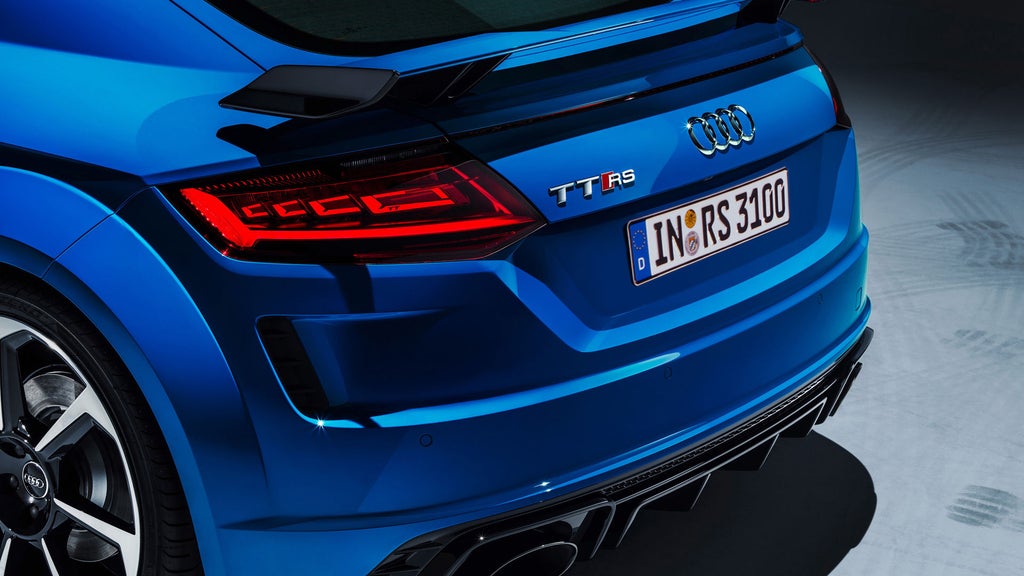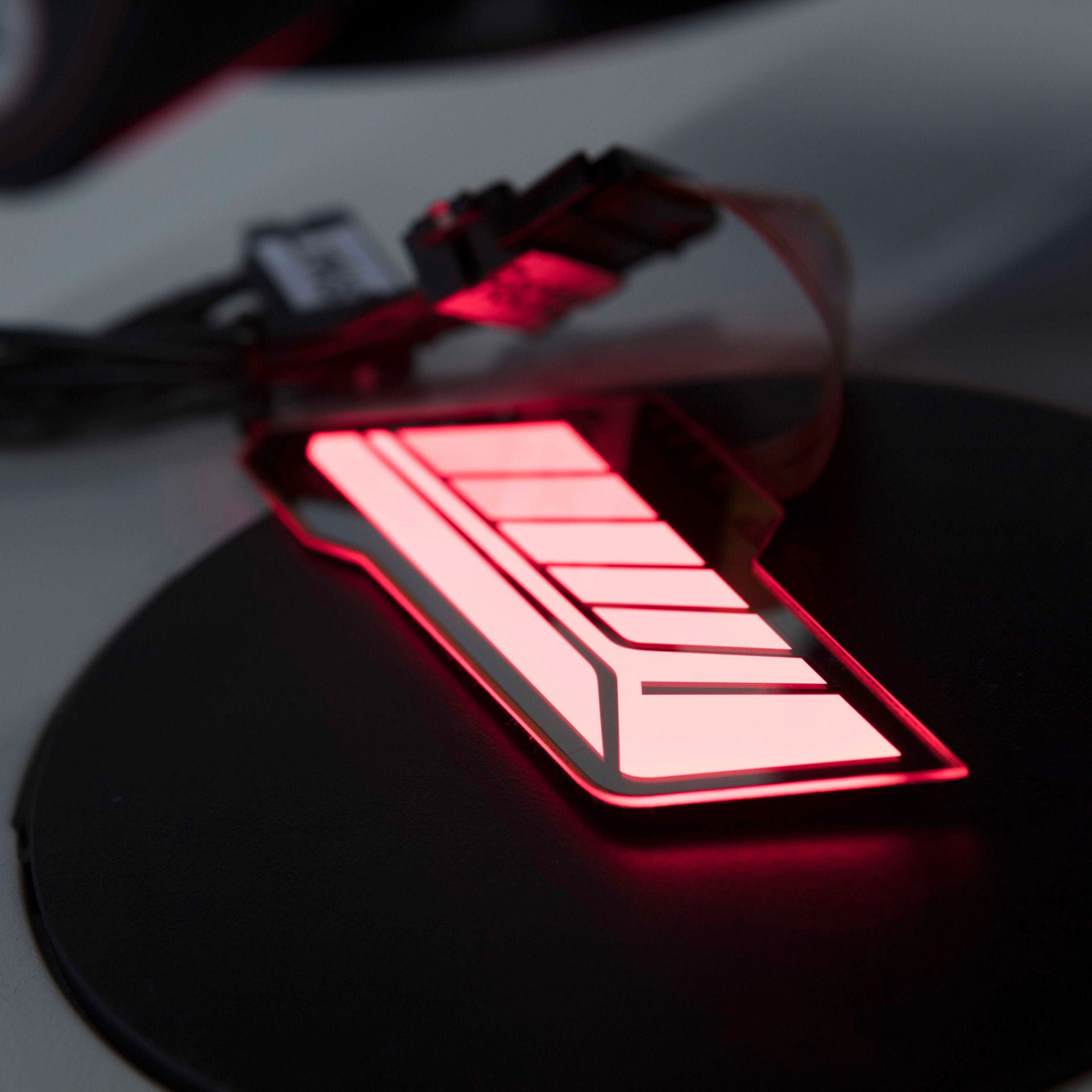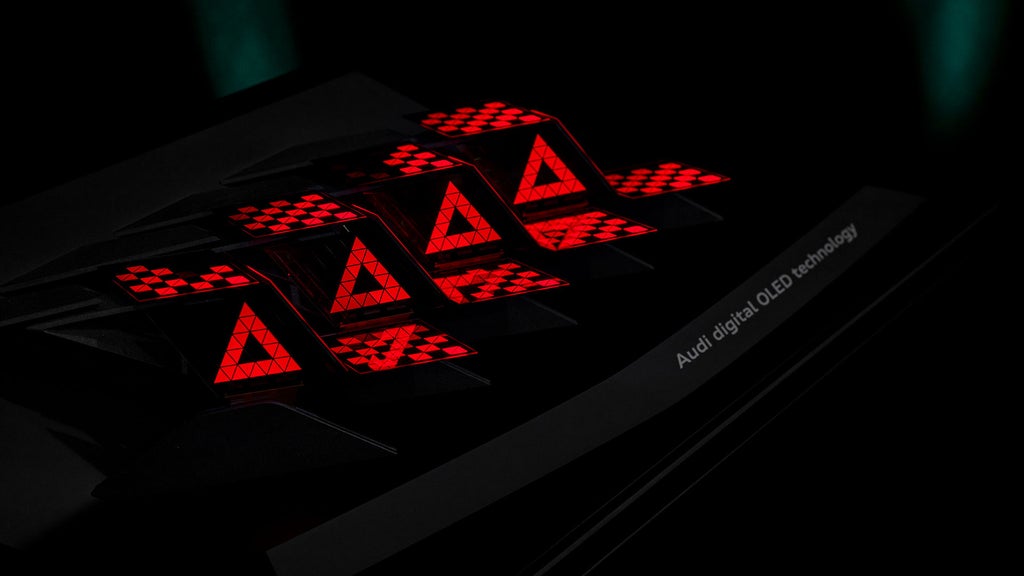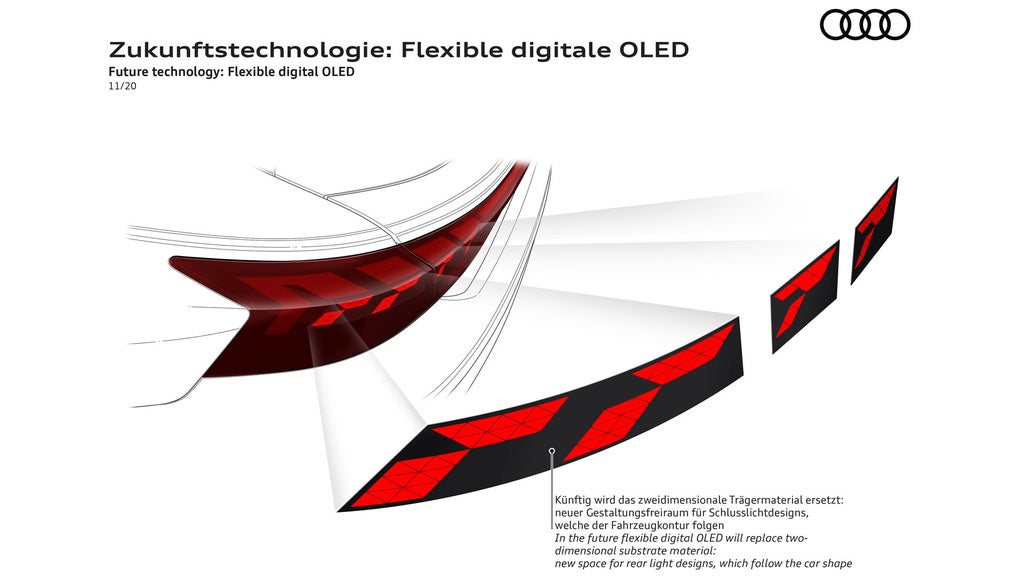Light: At the heart of Audi’s DNA
missing translation: fa.article-intro.reading-time – 05/12/2023

The Audi TT RS, the world’s first car to use OLED rear lights
Audi TT RS Coupé:Fuel consumption (combined) in l/100 km: 9.2–8.8; CO₂ emissions (combined) in g/km: 208–201
The Audi TT RS, the world’s first car to use OLED rear lights
Audi TT RS Coupé:Fuel consumption (combined) in l/100 km: 9.2–8.8; CO₂ emissions (combined) in g/km: 208–201
Digital lights: Audi changes how the car communicates with its environment
"Audi recognized the potential of using OLED technology in rear lights early on and has since continued to advance their digitalization. We are the only car manufacturer to have strategically and systematically developed this lighting technology to put even more lighting functions on the road. Unlike point-light sources like LEDs, OLEDs are panel radiators. They are more efficient, lighter and more homogeneous than traditional lighting systems and, due to their strong contrast, are gradually assuming the role of exterior displays as an essential enabler for communication with the car’s environment. Having digitalized our OLED rear lights, it is now possible to use light to communicate with other road users – for example, with proximity indication. In the future, we will continue to intensify how the car uses light to interact with its environment."
– Stephan Berlitz, Head of Lighting Development
The brand with the four rings, and thus the entire automotive industry, began its OLED journey in 2016. As the dynamic flagship of the TT series, the TT RS was the first vehicle to use OLED technology to light up the darkness behind the car.
OLEDs (organic light emitting diodes) are lights that contain at least two electrodes, at least one of which is transparent, which in turn are made up of a great number of exceedingly thin layers of organic semiconductor materials themselves. Low DC voltage between three and four volts causes the layers (which are less than a thousandth of a millimeter thick, many times thinner than human hair) to emit light. The color depends on the molecules within the light source.
As panel radiators, OLEDs exhibit a new degree of homogeneity with continuous, precise variability of brightness. As a result, they do not require reflectors, light guides or similar optics – making OLED units efficient and lightweight. What’s more, they require almost no cooling.
OLEDs can be configured freely and divided into precisely switchable segments, which offers light designers an enormous amount of freedom and enables new dynamic lighting functions. This is demonstrated in particular by the very high contrast that segmented OLED lights can reach.
The era of digitalization dawns
Just four years later, in 2020, the brand with the four rings are now pioneering the next step in the evolution of the automotive industry: digital OLED rear lights. The Audi Q5 now features this digitalized upgrade to OLED lighting technology for the first time.
Thanks to this digitalization, Audi customers were the first to be able to select an individual rear light signature in the configurator. In concrete terms, it works like this: A bus system sends the selected signature to the rear lights, which control each individually controllable OLED segment to display the selected design. In this way, the configurator can be used to select and realize individual drivers’ preferences.
“The exterior design is the initial visual link between car and person, the first impression that gets made! Since its the first impression that counts, the design must immediately convey our brand values such as emotionality, progressiveness, sportiness, and quality – this also applies to Audi’s light design, which also has a very special significance. Because even at night, you can recognize an Audi as an Audi from a great distance, and when it gets closer, its lighting shows you what model it is. But with digitalization, so much more is possible: On the one hand, the light signatures we offer perfectly match the brand and the character of the respective model. On the other hand, they let our customers express their own preferences and moods thanks to individual sequences.”
– Cesar Muntada, Head of Light Design

An OLED panel on an older Audi A8

The Audi Q5 with digital OLED rear lights and one of three signatures that drivers can select in the configurator: In the “dynamic” Audi drive select mode, an additional rear light signature is available.
The Audi Q5 with digital OLED rear lights and one of three signatures that drivers can select in the configurator: In the “dynamic” Audi drive select mode, an additional rear light signature is available.
“At Audi, light design is an a important field for innovation and a deeply rooted part of of our DNA. Our goal for exterior lighting is a perfect symbiosis of the exterior’s overall shape and the progressive look of the digital eyes. After all, at first glance, a car is essentially defined by two things: the proportions of its body during the day and, during the night when the proportions are not visible, its lights.”
- Cesar Muntada, Head of Light Design
But the digital OLED rear lights do more than allow the driver to choose their favorite signature. With proximity indication (depending on equipment), they also make driving safer: If the Audi Q5 or A8 has stopped and another car (or road user) comes within two meters from behind, all the OLED segments automatically activate. This makes the visible surface of the car larger, making it much easier to see.
The future of digital OLED rear lights
In the future, digital OLED rear lights will offer even more possibilities for personalization while also enabling a new dimension of communication with road users.
These two benefits are made possible by the significantly increased number of segments in the digital OLED lights themselves and a higher degree of connectivity in the car overall. Here’s an example: As part of the expanded connectivity, a future Audi will be able to detect imminent hazardous situations, for example, black ice on the road ahead. The digitalized rear lights will make it possible to warn following traffic, so drivers behind will have ample time to adjust their speed and driving distance accordingly.

Possible concept idea for a warning symbol in the digital OLED rear lights.
Possible concept idea for a warning symbol in the digital OLED rear lights.
Keeping things moving: Flexible digital OLED technology
At the current time, the technology only allows two-dimensional OLED panels as light sources. But new, flexible substrates will make it possible to offer customers flexible digital OLED rear lights in the future.
The three-dimensionality will allow the lights to be integrated even better into the shape of the car’s body, besides promising even more opportunities for communication and personalization.

A future technology: Flexible digital OLEDs
A future technology: Flexible digital OLEDs
The brand with the four rings stands for progressive design and first-class functionality when it comes to advanced lighting technology. What began with the digital OLED rear lights in the Q5 is far from over. Going forward, keep your eye on Vorsprung durch Technik with Audi’s groundbreaking digital OLED rear lights:


